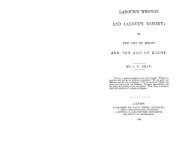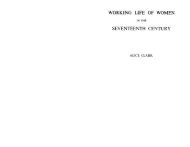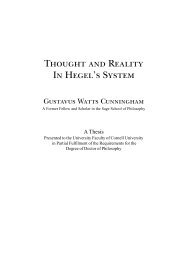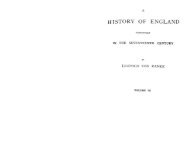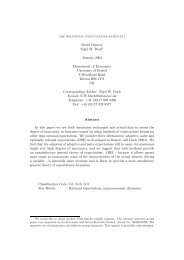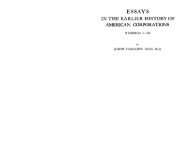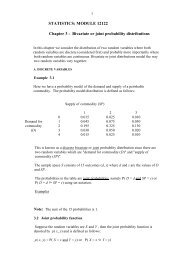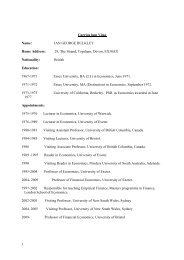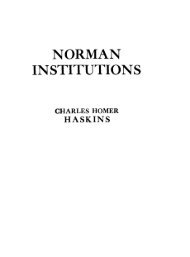The Constitutional History of England
The Constitutional History of England
The Constitutional History of England
Create successful ePaper yourself
Turn your PDF publications into a flip-book with our unique Google optimized e-Paper software.
2 <strong>Constitutional</strong> <strong>History</strong> PERIODLatin was commonly used for many legal documents, conveyances<strong>of</strong> land and the like. Seemingly it was the contactwith Roman civilization in the form <strong>of</strong> Christianity whichraised the desire for written laws. Beda, who died in 735,says that Ethelbert put his laws in writing ' juxta exemplaRomanorum.' It is possible that some collection <strong>of</strong> ecclesiasticalcanons served as a model. We do well to rememberthat the oldest laws that we have, however barbarous theymay seem, are none the less Christian laws. ' God's propertyand the church's 12-fold. A bishop's property I I-fold. Apriest's property 9-fold. A deacon's property 6-fold. A clerk'sproperty 3-fold':-this is the first utterance <strong>of</strong> English law.This it is well to remember, for it should prevent any glib blkabout primitive institutions : Teutonic law (for what is true <strong>of</strong><strong>England</strong> is true also <strong>of</strong> the continent) when it is first set inwriting has already ceased to be primitive ; it is alreadyChristian, and so close is the connection between law andreligion, that we may well believe that it has already undergonea great change.We have two more sets <strong>of</strong> Kentish laws, a set from Hlotharand Eadric, who seem to have been joint kings <strong>of</strong> theKentings, which we may date in 680 or thereabouts, and a setfrom Wihtrzd, which comes from 700 or thereabouts. Wessextakes up the tale ; in 690 or thereabouts king Ine, with thecounsel and consent <strong>of</strong> the wise, published a set <strong>of</strong> laws.<strong>The</strong>n we have a gap <strong>of</strong> two centuries, the greatest gap in ourlegal history. <strong>The</strong> laws <strong>of</strong> Alfred, which come next in order,may be attributed to 890 or thereabouts. <strong>The</strong>y show us thatduring the two last centuries there had been no great changein the character <strong>of</strong> law or the legal structure <strong>of</strong> society.Alfred disclaims all pretension <strong>of</strong> being an innovator, he willbut set down the best principles that he has been able to findin the laws <strong>of</strong> Ethelbert, <strong>of</strong> Ine and <strong>of</strong> the Mercian king,Offa. <strong>The</strong> laws <strong>of</strong> Offa <strong>of</strong> Mercia, who died in 796, have notcome down to us.Beginning with Alfred's we now have a continuous series<strong>of</strong> laws covering the whole <strong>of</strong> the tenth century and extendinginto the eleventh, laws from Edward the Elder, Ethelstan,Edmund, Edgar, and Ethelred ; the series is brought to an endI Anglo-Saxon Dooms 3by a long and comprehensive set <strong>of</strong> laws coming from ourgreat Danish king, Canute. We have no one law that can beascribed to Edward the Confessor, who, however, in after daysacquired the fame <strong>of</strong> having been a great legislator.<strong>The</strong>se Anglo-Saxon laws or dooms-as they call themselves-afterhaving lain hid in MS. for several centuries, weredug up in the sixteenth century as antiquarian curiosities.Lambard published some <strong>of</strong> them in 1568 under the titleArchaionomia. In 1840 they were published for the RecordCommissioners with a modern English translation under thetitle A~iciezzt Lows a d I~istitutes <strong>of</strong> E?zgla~zd; they were againpublished in 1865 with a German translation by Dr ReinholdSchmidl. <strong>The</strong>se editions contain, besides the dooms, a fewbrief statements <strong>of</strong> customary law, forms <strong>of</strong> oaths and the like.<strong>The</strong> whole material can be printed in about 160 octavo pages.We have nothing from this period that can be called a treatiseon law, and we have but very few accounts <strong>of</strong> litigation. 011 theother hand we have a large number <strong>of</strong> private legal documents,conveyances <strong>of</strong> lands, or land books as they were called,leases, wills and so forth ; these were collected and printed byJ. M. Kemble in his Codex Dtplo~noticr~s &vi Sttxonici.I have spoken <strong>of</strong> ' sets <strong>of</strong> laws' and have refrained fromusing the word code. Once or twice it would seem as if anattempt had been made to state the existing law ; but ingeneral these laws seem to be new laws, additions to the lawthat is already in force ; we may compare them to ourmodern statutes and like our statutes they pre-suppose a body<strong>of</strong> existing law. I will not say that they pre-suppose'common law,' because I think that the phrase implies lawcommon to the whole kingdom, and how much law there wascommon to the whole kingdom in the days before the NormanConquest is a very difficult question. In the twelfth century,some time after the Conquest, it was the established theorythat <strong>England</strong> was or had been divided between three laws,the West-Saxon, the Mercian and the Danish. <strong>The</strong> oldlaws themselves notice this distinction in a casual way; butwe have little means <strong>of</strong> telling how deep it went. It is highly1 <strong>The</strong> best edltion is now that <strong>of</strong> F. Liebermann, Die Cesetze de?- A~zgelsachsm,2 vols., Halle, 1903 and 1906.



